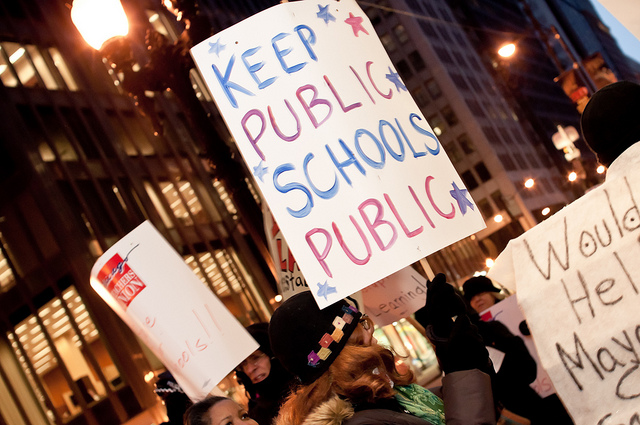Charters are private. They don’t serve special education students or English language learners. They aren’t public schools and should not be part of the school options guide given to parents or a common enrollment system. That is the chatter in Oakland among parts of the school community.
There is too much to unpack in one post, but let’s start with the question—what is a public school? And answer one part of that—do charters provide relatively open access?
Public schools have 4 characteristics, (1) basically open access for local families, much of the costs are paid by (2) public support, they are (3) publicly managed and accountable, and they meet some (4) basic standards of fairness in serving all students. Today we are looking at open access.
Open access means that schools should be basically free and open to the public, it does not mean that every school is or should be equipped to serve every student. In some cases it makes sense to have specialized programs, with supports aligned to the needs of particular students, and to house those students together and consolidate the services for them. But it should mean that within the system every child can have their needs met. And that these specialized placements really are the exception and not the rule for special needs kids.
So do Oakland charters fit the definition of public schools in terms of open access?
Charter schools, legally, must accept every student that applies, and hold a lottery if more students apply than spots exist. There may be some preferences for local students, disadvantaged students and a limited number of spots for founders. I have been critical around whether every charter school, embodies this ethic, in a prior post, Getting Honest on Charter Admissions, but those are the rules, and it’s really up to us and authorizers to hold charters accountable for following rules.
And despite protestations around charters not serving English language learners and special education students, the data I found here, covering enrollment in secondary schools in Oakland, shows somewhat lower special education enrollment in charters overall and roughly equivalent enrollment of ELLs.

Looking at the numbers (and would love someone to send me numbers for the entire k-12 which I could not find easily) there are some disparities, but nothing that would imply systematic discrimination per se. And there are wide variations within charters, with some vastly over-representing the District in Sped and/or ELLs and others vastly underrepresenting.
And let’s compare with the District enrollment rules, which assign schools primarily on neighborhood of residence. This tends to limit the best schools to the neighborhood families. In a country where residential segregation and economic means largely determine access to quality schools, with the most disadvantaged students generally residing in neighborhoods with the worst schools. Our current system cements economic and residential segregation as educational destiny.
So do charters provide open access? I think some do and some don’t. But we don’t really know because we don’t have the data.
Imagine if we did have a system to track which schools families applied to, whether they were unusual levels of attrition or non-acceptance of underserved students, and schools were held accountable on the basis of this now public information, with charters that were discriminating being closed.
Actually you don’t need to imagine it. The system is called common enrollment, it’s being considered by OUSD as we speak, and right now 73% of the public want it and most of the anti-charter folks are fighting against it.

